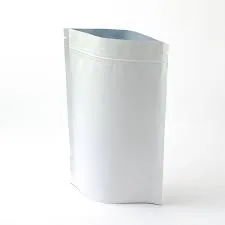- Afrikaans
- Albanian
- Amharic
- Arabic
- Armenian
- Azerbaijani
- Basque
- Belarusian
- Bengali
- Bosnian
- Bulgarian
- Catalan
- Cebuano
- chinese_simplified
- chinese_traditional
- Corsican
- Croatian
- Czech
- Danish
- Dutch
- English
- Esperanto
- Estonian
- Finnish
- French
- Frisian
- Galician
- Georgian
- German
- Greek
- Gujarati
- haitian_creole
- hausa
- hawaiian
- Hebrew
- Hindi
- Miao
- Hungarian
- Icelandic
- igbo
- Indonesian
- irish
- Italian
- Japanese
- Javanese
- Kannada
- kazakh
- Khmer
- Rwandese
- Korean
- Kurdish
- Kyrgyz
- Lao
- Latin
- Latvian
- Lithuanian
- Luxembourgish
- Macedonian
- Malgashi
- Malay
- Malayalam
- Maltese
- Maori
- Marathi
- Mongolian
- Myanmar
- Nepali
- Norwegian
- Norwegian
- Occitan
- Pashto
- Persian
- Polish
- Portuguese
- Punjabi
- Romanian
- Russian
- Samoan
- scottish-gaelic
- Serbian
- Sesotho
- Shona
- Sindhi
- Sinhala
- Slovak
- Slovenian
- Somali
- Spanish
- Sundanese
- Swahili
- Swedish
- Tagalog
- Tajik
- Tamil
- Tatar
- Telugu
- Thai
- Turkish
- Turkmen
- Ukrainian
- Urdu
- Uighur
- Uzbek
- Vietnamese
- Welsh
- Bantu
- Yiddish
- Yoruba
- Zulu
Innovative Solutions for Effective Blister Pack Packaging in Modern Retail
Understanding Blister Pack Packaging A Comprehensive Overview
Blister pack packaging has emerged as a critical component in various industries, particularly in pharmaceuticals, consumer goods, and food sectors. Its unique structure and functionality have made it a preferred choice for manufacturers aiming to optimize product protection, accessibility, and shelf-life. This article delves into the intricacies of blister pack packaging, highlighting its benefits, types, and applications.
What is Blister Pack Packaging?
Blister pack packaging consists of a pre-formed plastic packaging that is molded into cavities (blisters), which hold products securely. Typically made from materials like PVC, PET, or aluminum, blister packs are designed to encase items such as pills, tablets, capsules, hardware components, and more. The design allows for a protective seal, usually created through heat sealing or cold forming, which safeguards the contents from external factors such as moisture, light, and contaminants.
Advantages of Blister Pack Packaging
1. Product Protection One of the primary advantages of blister pack packaging is its ability to protect products from physical damage and environmental factors. The solid enclosure minimizes the risk of breakage, tampering, and exposure to air or moisture, thus prolonging the shelf life of sensitive products.
2. Convenience and User-Friendliness Blister packs allow for easy access to individual items, particularly in the pharmaceutical industry where quick retrieval of pills is critical. The design facilitates single-dose dispensing, which not only supports compliance in medication intake but also enhances consumer convenience.
3. Branding and Aesthetics Blister packs can be printed with high-resolution graphics, allowing brands to communicate their identity effectively. Eye-catching designs help products stand out on retail shelves, thereby attracting consumer attention.
4. Cost-Effectiveness In terms of production, blister packaging is often more cost-effective than other types of packaging. It requires less material than traditional boxes and jars, which can lead to lower shipping costs due to reduced weight. Additionally, the efficient production process can lead to savings for manufacturers.
Types of Blister Packs
blister pack packaging

Blister packs can be categorized into several types based on their construction and sealing methods
1. Thermoformed Blister Packs These are created by heating a plastic sheet until pliable, then forming it into a mold to create cavities. This type is commonly used for pharmaceutical applications.
2. Cold Formed Blister Packs Made from aluminum or a combination of materials, cold-formed packs offer superior barrier properties, making them ideal for moisture-sensitive medications.
3. Clamshell Packs These consist of a two-part design that folds over the product, offering a versatile way to display items while protecting them from contamination.
4. Spot Seal Blister Packs Implemented for items that do not require complete sealing, this type allows for easy removal of the product while still providing a degree of protection.
Applications in Various Industries
Blister packaging is prevalent across several sectors. In the pharmaceutical industry, it is used for packaging tablets and capsules, ensuring safety and aiding in dosage management. The consumer goods sector utilizes blister packs for items ranging from electronics to toys, capitalizing on the security and visibility they offer. Even the food industry has adopted blister packaging for single-serving snacks, benefiting from the freshness and convenience it provides.
Conclusion
Blister pack packaging represents an innovative solution that meets the needs of modern consumers and producers alike. Its protective qualities, ease of use, and design flexibility make it a valuable asset across various industries. As technology continues to evolve, so too will the applications and capabilities of blister packaging, ensuring it remains a key player in the world of packaging solutions.













